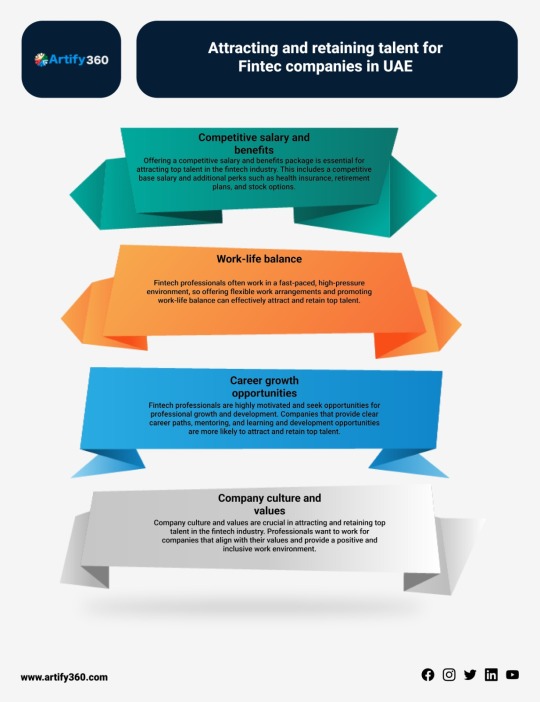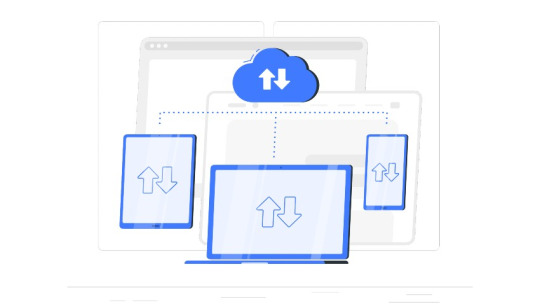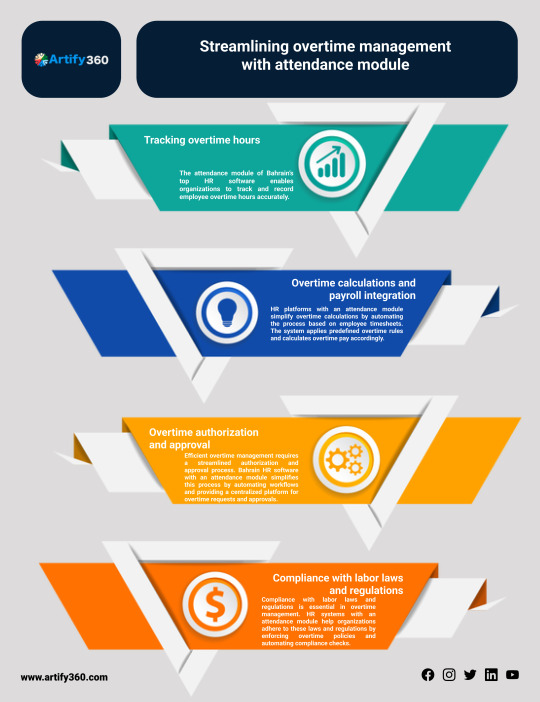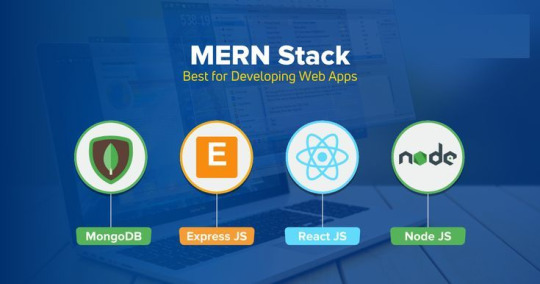#low cost hr software
Explore tagged Tumblr posts
Text

Best HR Software in UAE: Your Competitive Edge
Searching for free HR software for UAE businesses? Look no further! Our cutting-edge solution offers robust HR management tools without breaking the bank. Unlock the potential of your workforce with our free HR and payroll software today!
#hr payroll software uae#best hr software uae#free hr software for uae#hr management software uae#best hr software in uae#hr and payroll software#hr software pricing#hr software#cheap hr software#low cost hr software#free hr and payroll software#hr software list
0 notes
Text
Revealing the Worth of Exclusive & Cheap HR Software for Your Time
The magic of HR software becomes even more attractive if it follows an affordable route in its implementation and impact. Including cheap HR software in your organization’s operational profile and HRMS activities will help you grow faster and further. This post is all about the great adventure of employing cheap automated digital solutions in the HR process.
Detailing the Worth of Cheap HR Software
The adequate value and support of the best HR software Bahrain to meet various requirements and conditions are listed below:
Broader functionalities Remember that HR software works at its absolute best by delivering the most important functionalities in the organization’s favor. These broader functions are the best for creating an HR management process in a streamlined flow.
Better compliance The factor of affordability will open up your compliance regulation norms and chances with ease. Easier methods may not mean active support or constant workflow of the compliance process, but you can access them more easily with a friendly budget.
Flexible measures Check any of the free HR software for Bahrain services, and it is easier for you to note that numerous flexible measures are available to guide you to operations impact with maximum benefits. This promise makes the overall business operations profile more endearing to the organization.
Cheaper HR options The idea of low-cost HR software is also beneficial in each HR module with immediate effect. All HR processes and options are cheaper to manage and control with the right digital HR tool at your disposal.
Solution-oriented model Let us consider the situation of lowering the cost of your HR software implementation. It will open up the chances for more solutions, and these may bring sufficient value to your future goals regarding HR software updates.
The benefits and advantages of cheap HR software in delivering value for your organization are manyfold. You may receive the best of the HR operations world by creating an essential management system that syncs well with your custom business model.
0 notes
Text
Affordable Low-Cost SEO Services for Small Businesses | H.R. Software Solution

Low Cost SEO Services for Small Business: A Complete Guide
In today's competitive digital market, small businesses need to maximize every dollar spent. One of the most effective strategies to grow online is through SEO (Search Engine Optimization). However, SEO can be expensive, particularly for companies with limited resources. That's why Low Cost SEO Services for Small Business are essential, providing affordable solutions to help businesses improve their online visibility without exceeding their budget.
At H.R. Software Solution, we understand the challenges small businesses face. This is why we specialize in providing low-cost SEO services that deliver high-quality results without breaking the bank. In this blog, we will explore how small businesses can benefit from affordable SEO solutions and how you can optimize your website to meet Google's ever-changing algorithms.
Why SEO is Important for Small Businesses
SEO helps your website rank higher in search engine results pages (SERPs), increasing visibility and driving organic traffic to your site. As more potential customers discover your business online, the chances of conversions grow significantly. Small businesses, in particular, stand to benefit greatly from SEO as it levels the playing field with larger competitors.
SEO Benefits for Small Businesses:
Increased Online Visibility: More visibility means more clicks and traffic.
Cost-Effective Marketing: SEO is one of the most affordable ways to attract customers.
Higher Conversion Rates: Organic search traffic often has higher intent to purchase.
Improved Brand Credibility: Ranking high on Google boosts credibility and trustworthiness.
However, navigating SEO can be complicated, and hiring an in-house team or expensive agencies may not be feasible. Therefore, choosing low-cost SEO services is a smart choice for small businesses.
Google's Updated Algorithm: What You Need to Know
Google updates its algorithms frequently to improve user experience and deliver more relevant results. In recent updates, Google has shifted focus on user intent, content relevance, and website experience. To succeed, your small business SEO strategy must align with these changes.
Key Elements of Google’s Latest Algorithm:
Page Experience (Core Web Vitals): Google now prioritizes websites that offer a fast, user-friendly experience.
Mobile-First Indexing: Websites must be mobile-friendly, as more users are searching on mobile devices.
Quality Content: Google rewards websites that provide valuable, informative content.
Backlinks: High-quality backlinks from reputable sites still hold value in ranking.
Incorporating these factors into your low-cost SEO services can make a huge difference in your rankings and visibility. At H.R. Software Solution, our affordable SEO packages include optimization for the latest algorithm changes to ensure your site remains competitive.
How Low-Cost SEO Services Work
Affordable SEO doesn't mean cutting corners. Instead, low-cost SEO services focus on efficiency and prioritizing essential activities to generate results. Here's what you can expect from our low-cost SEO services for small businesses:
1. Keyword Research and Optimization
Effective SEO starts with the right keywords. For small businesses, targeting highly competitive keywords may not be ideal. Instead, focusing on long-tail keywords (phrases with lower search volume but higher intent) can yield faster and more relevant traffic.
For instance, a small bakery might target “best cupcakes in [city]” rather than just “cupcakes.” This strategy will help your business rank quicker and appeal to local customers looking for specific services.
2. On-Page Optimization
On-page SEO is crucial for ensuring that Google can crawl and understand your site. This includes optimizing title tags, meta descriptions, headers, and URLs. We ensure that every aspect of your website is optimized for search engines. Our low-cost services also include:
Image optimization
Internal linking
Content structure enhancement
By focusing on on-page SEO, you’ll be aligning your website with Google’s best practices and algorithm updates.
3. Technical SEO
Even with great content, poor technical SEO can limit your website's ability to rank. Our affordable SEO services include technical SEO improvements such as:
Boosting website speed (a crucial factor in Google’s Page Experience update)
Ensuring mobile-friendliness
Fixing broken links
Improving site architecture and navigation
These technical fixes ensure your website runs smoothly, is easy for Google to index, and provides a better user experience.
4. Content Creation
Content is at the heart of any successful SEO strategy. However, creating high-quality, relevant content that satisfies user intent can be expensive. Our low-cost SEO services include content strategies that maximize your budget without compromising on quality. We create blog posts, product descriptions, and landing pages optimized for SEO.
When you regularly publish SEO-optimized content, Google will start to recognize your site as authoritative in your niche. Additionally, this content serves as valuable resources for your audience, increasing engagement and trust in your brand.
5. Local SEO
For small businesses, local SEO is essential. Most customers will search for nearby services, making it crucial to rank for local terms. Our low-cost SEO services include:
Google My Business optimization
Local keyword targeting
NAP (Name, Address, Phone) consistency
Local backlinking
Appearing in local search results is vital for small businesses looking to attract nearby customers, especially for brick-and-mortar stores.
6. Link Building
Backlinks remain a strong ranking factor. However, gaining high-quality backlinks can be expensive. Our low-cost SEO services include affordable link-building strategies like:
Guest posting on relevant blogs
Building relationships with local businesses
Acquiring citations from directories
These strategies will help increase your domain authority without straining your budget.
Benefits of Choosing Low-Cost SEO Services
Now that we’ve covered how low-cost SEO services work, let’s highlight some key advantages:
1. Budget-Friendly
Low-cost SEO services allow small businesses to access professional optimization without exceeding their marketing budget. This approach ensures you receive the most critical services that yield results.
2. Tailored to Small Businesses
Unlike one-size-fits-all solutions from larger agencies, our affordable SEO services are tailored specifically for small businesses. This means we focus on strategies that work for your particular market and target audience.
3. Scalable as You Grow
One of the best aspects of affordable SEO services is scalability. As your business grows, you can easily scale your SEO efforts without disrupting your marketing budget.
4. Faster Results
Because we focus on long-tail keywords, local SEO, and niche-specific strategies, our low-cost services often yield quicker results than traditional, more expensive SEO tactics. You will start to see organic traffic improvements and higher rankings sooner.
Why Choose H.R. Software Solution for Low-Cost SEO Services?
At H.R. Software Solution, we know that every small business has unique challenges. We have a proven track record of helping small businesses improve their online presence through affordable SEO services that meet their specific needs.
Key Reasons to Choose Us:
Proven Results: We deliver measurable improvements in search rankings and traffic.
Custom Strategies: No two businesses are alike, so we develop tailored SEO strategies.
Transparency: We provide clear reporting, so you know exactly what’s working.
Ongoing Support: SEO is an ongoing process. We offer continuous optimization and support.
Our team stays updated on Google’s latest algorithm changes to ensure your website remains competitive.
Conclusion
For small businesses, navigating the world of SEO can be overwhelming, especially with budget constraints. However, with the right low-cost SEO services, you can achieve meaningful results without overspending. By focusing on critical areas like keyword research, content creation, and local SEO, you can grow your online presence and compete with larger businesses.
At H.R. Software Solution, we offer affordable SEO solutions that deliver high-impact results, helping your small business thrive in the digital landscape.
Ready to boost your business with low-cost SEO? Contact us today to learn more!
Read More.....
Author Bio: Simi Gajala has been working in digital marketing since 2018, amassing 6 years of experience. Currently Working as a Digital Marketing Executive at H.R. Software Solution. Simi specialises in SEO, SMO, Google Ads, Meta Ads, and blogs & content writing, Boosting Brands, Increasing Visibility, And Enhancing Online Performance.
0 notes
Text
What You Need to Know Before Choosing HRMS Software?
Introduction
Choosing the right HRMS software is a game-changer for businesses looking to automate and improve their HR processes. Many organizations struggle with time-consuming manual tasks, payroll miscalculations, and compliance risks. The right human resource management software can eliminate these challenges, enhance employee experience, and improve overall efficiency. However, with so many options available, selecting the best solution requires careful evaluation. This guide will walk you through the key factors to consider before investing in an HRMS software in India.

Understand Your HR Needs and Requirements
Evaluate Your Current HR Processes
Before selecting an HRMS software, identify the pain points in your current system: ✔ Are payroll errors causing delays? ✔ Is attendance tracking inaccurate or difficult? ✔ Do employees struggle with accessing HR-related information?
Once you recognize these challenges, list the essential features you need, such as automated payroll processing, self-service portals, and seamless compliance management.
Consider Your Organization's Size and Growth Plans
A small business and a growing enterprise have different HR needs. When evaluating HRMS software in India, check if it can: ✔ Support your current workforce size and scale as your company grows. ✔ Handle multi-location workforce management efficiently.
Scalability is crucial to avoid costly software migration in the future.
Prioritize User Experience and Employee Adoption
The best human resource management software should be easy to use. A complex system can frustrate employees and lead to low adoption rates. Look for: ✔ A user-friendly interface that requires minimal training. ✔ Mobile compatibility for on-the-go access to HR services.
By choosing an intuitive platform, HR teams can improve engagement and productivity.
Assess the HRMS Software’s Capabilities
Core HR Management Features
A reliable HRMS software should provide essential HR functionalities, including: ✔ Employee data management – Secure storage of personal and professional records. ✔ Attendance and leave tracking – Real-time tracking of working hours and leave requests. ✔ Payroll integration – Automated salary processing to reduce errors and ensure compliance. ✔ Performance management – Tools to set goals, track progress, and provide feedback.
Talent Management Functionalities
To attract and retain the best talent, your HRMS software in India should include: ✔ Recruitment and onboarding – Simplified hiring and seamless employee onboarding. ✔ Learning and development – Training modules to enhance employee skills. ✔ Succession planning – Identifying future leaders within the company.
Analytics and Reporting
HR analytics provide valuable insights for decision-making. Look for an HRMS software that offers: ✔ Customizable reporting – Generate detailed reports on workforce trends. ✔ Data-driven insights – Optimize HR strategies using real-time analytics.
Evaluate the Implementation and Support
Implementation Process
A smooth transition to a new human resource management software is essential for efficiency. Consider: ✔ The time required for setup and data migration. ✔ Whether the vendor offers onboarding assistance and training sessions.
Ongoing Support and Maintenance
A robust support system ensures long-term success with your HRMS software. Check for: ✔ 24/7 customer support availability. ✔ Regular software updates and new feature rollouts.
Good customer support can make a huge difference in software usability and problem resolution.
Consider the Total Cost of Ownership (TCO)
Subscription or Licensing Fees
Different vendors offer varied pricing models. Understand the cost structure of HRMS software in India by: ✔ Comparing subscription fees versus one-time licensing costs. ✔ Checking for hidden charges like data storage fees.
Additional Expenses
Besides the software cost, factor in: ✔ Implementation and integration costs. ✔ Employee training and change management expenses.
Scalability and Future Costs
An HRMS software should grow with your organization. Look for: ✔ Flexible user pricing that allows you to add or remove employees as needed. ✔ Long-term affordability to prevent unexpected cost increases.
Make an Informed Decision
Selecting the right free HRMS software can transform HR operations by reducing manual efforts, improving payroll accuracy, and enhancing employee satisfaction. By considering scalability, features, user-friendliness, and cost, businesses can make a well-informed decision that aligns with their long-term goals.
#HRMS Software#Free HRMS Software#HRMS Software in India#HRMS#Human resource management software#HRMS Software for Free#HRMS Software for India
0 notes
Text
Common Services Provided by Outsourcing Companies
Customer Support Many businesses choose to outsource customer support to outsourcing companies that specialize in handling call centers and helpdesk services. These companies offer 24/7 availability, multilingual support, and scalable services that meet customer demand during peak times. By outsourcing customer service, businesses can enhance customer satisfaction while keeping operational costs low.
Information Technology (IT) Services IT outsourcing is a popular service offered by outsourcing companies. These firms manage everything from software development, cloud computing, data storage, and network security to technical support. Partnering with a specialized IT outsourcing company ensures businesses have access to the latest technologies and expertise without needing to maintain an in-house IT department.
Human Resources (HR) Services HR outsourcing is another area where businesses commonly turn to outsourcing companies. These firms handle various HR functions, including recruitment, payroll processing, benefits management, and employee training. Outsourcing these responsibilities allows companies to streamline their HR processes, reduce administrative burden, and ensure compliance with labor laws.
Accounting and Finance Financial outsourcing is crucial for businesses seeking to improve their accounting processes. Outsourcing companies can manage bookkeeping, payroll, tax preparation, and financial reporting, helping businesses stay organized and compliant with financial regulations. By outsourcing these functions, businesses can also access advanced financial tools and technologies without the expense of building internal teams.
Manufacturing and Supply Chain Management Many businesses in manufacturing, retail, and e-commerce work with outsourcing companies that specialize in production, warehousing, and logistics. These companies manage everything from the sourcing of raw materials to the distribution of finished products, allowing businesses to focus on product development and sales while improving efficiency and cost-effectiveness in their supply chain.
0 notes
Text
How to Build A Scalable Business Model in 2025
Scalability is the cornerstone of modern business success. Indeed, a scalable business model guarantees that your enterprise grows consistently. Also, business manages rising demands without compromising on quality or efficiency. This year businesses need to opt for the latest technologies, market trends, and customer expectations to remain competitive. In this blog, Gaurav Mohindra - a business tycoon has shared a few key strategies and steps to build a scalable business model in today’s dynamic landscape. Let's take a deep dive.

Understand the Concept of Scalability
Before we dive into the tips, firstly let's understand what is scalability. Scalability refers to the ability of a business to grow its revenue without a proportional increase in costs. A scalable business model is built to accommodate expansion seamlessly. This requires:
• Efficient systems and processes.
• A well-established infrastructure with the latest technological tools.
• The ability to cater to an expanding customer base without significant operational strain.
The Key Elements of a Scalable Business Model?
1. Automation and Technology Integration: Leverage technology to streamline operations and reduce dependency on manual processes says Gaurav Mohindra. Key areas to focus on comprise:
• Customer Relationship Management (CRM) Software: Automate customer interactions and data management.
• Enterprise Resource Planning (ERP): Integrate core business processes like finance, supply chain, and HR.
• AI and Machine Learning: Use predictive analytics for decision-making and customer behavior analysis.
2. Flexible Infrastructure: Invest in cloud-based solutions and modular systems that can scale with your business, Gaurav Mohindra says. Cloud computing provides:
• Scalability on demand without significant upfront costs.
• Better collaboration and remote work competence.
3. Standardized Processes: Document and standardize processes to ensure consistency and efficiency as you grow. This includes:
• Clear business operating procedures.
• Employee training programs to maintain quality across teams.
4. Scalable Revenue Streams: Create products or services that can generate revenue without significant additional costs. For instance:
• Subscription-based models.
• Digital products or online services with low distribution costs.
Steps Involved Building a Scalable Business Model
A scalable business model ensures steady growth without a proportional increase in costs. It is actually essential for tycoons who aim to enlarge their business operations while maintaining profitability. Here are the essential steps given by Gaurav Mohindra to build a scalable business model:
1. Identify a Clear Value Proposition: Your business must solve a specific problem or meet a need in the market. Hence, focus on a product or service that solves a significant problem or fulfills a critical need. Ensure it’s market-relevant and has the potential to attract a large audience.
2. Streamline Processes: Efficient processes are the backbone of scalability. In order to automate repetitive business tasks, you can utilize tools such as CRM software, inventory management systems, or marketing automation platforms.
3. Focus on Target Markets: Narrowing your focus to a specific target audience ensures that your resources are used efficiently. Strategies comprise performing thorough market research to comprehend customer preferences and tailoring your offerings to meet the different needs of your audience.
4. Leverage Technology: Adopt scalable technologies such as cloud computing, AI, or SaaS platforms advise Gaurav Mohindra. The latest technologies enable enterprises to cultivate without huge infrastructural investments.
5. Build a Strong Team: Invest in a skilled and adaptable team. Hire employees with diverse skill sets. Provide on-the-job training to employees in order to manage growing responsibilities and foster a culture of innovation. Establishing a strong company culture that promotes innovation.
6. Test and Validate the Model: Start small gather feedback and then test your business model to recognize challenges and opportunities for enhancement.
7. Monitor and Adapt: Constantly track performance metrics. Utilize perceptions to make data-driven decisions and adapt to market trends.
Conclusion
Creating a scalable business model in 2025 needs a mix of the latest technology, streamlined processes, and tactical decision-making. According to Gaurav Mohindra, by focusing on automation, data-driven techniques, and a strong value proposition, you can set your business for sustainable growth. Do not forget, that scalability is not just about business development but also about maintaining efficiency and quality as you enlarge your business. Hope you find this blog helpful. All the best.
Originally Posted: https://gauravmohindrachicago.com/how-build-business-model-2025/
0 notes
Text
How Workflow APIs are Transforming Business Automation
In today’s fast-paced digital era, businesses are under constant pressure to streamline operations, enhance productivity, and stay competitive. Workflow APIs (Application Programming Interfaces) have emerged as game-changing tools in the realm of business automation, enabling organizations to integrate, automate, and optimize their processes seamlessly.

This blog delves into how Workflow APIs are revolutionizing business automation, highlighting their benefits, use cases, and the future they promise.
What Are Workflow APIs?
Workflow APIs are interfaces that allow different software systems to communicate and work together to automate workflows. By bridging disparate systems, Workflow APIs enable businesses to create streamlined, efficient processes without manual intervention.
These APIs provide the flexibility to customize workflows, connect tools, and automate repetitive tasks, making them an integral component of modern business automation strategies.
Key Benefits of Workflow APIs
1. Enhanced Integration Across Platforms
Workflow APIs facilitate seamless integration between various software platforms, such as CRM, ERP, and HR systems. This eliminates silos, ensuring data flows smoothly across departments, leading to better collaboration and informed decision-making.
2. Time and Cost Efficiency
Manual processes can be time-consuming and error-prone. Workflow APIs automate repetitive tasks, reducing the workload on employees and minimizing human errors. This translates to significant time and cost savings for businesses.
3. Scalability and Flexibility
As businesses grow, their workflows become more complex. Workflow APIs provide the scalability and flexibility needed to adapt to evolving business needs, ensuring that automation strategies remain effective as the organization expands.
4. Improved Customer Experience
By automating processes like order tracking, customer support, and feedback collection, Workflow APIs enhance the overall customer experience. Faster response times and personalized interactions lead to higher customer satisfaction.
5. Data-Driven Decision Making
Workflow APIs enable real-time data exchange and reporting, providing actionable insights. Businesses can leverage this data to optimize operations and make strategic decisions.
Use Cases of Workflow APIs
1. HR and Recruitment
Workflow APIs can automate onboarding processes, ensuring new hires are seamlessly integrated into the company. They can also connect applicant tracking systems with HR software to streamline recruitment.
2. Finance and Accounting
From invoice processing to expense approvals, Workflow APIs automate financial workflows, ensuring compliance and accuracy. Integration with accounting software simplifies financial reporting and analysis.
3. Marketing Automation
Workflow APIs connect marketing tools like email automation platforms, CRM, and analytics tools, enabling personalized campaigns and efficient lead nurturing.
4. E-Commerce Operations
In the e-commerce industry, Workflow APIs automate order processing, inventory management, and logistics, ensuring smooth operations and timely deliveries.
5. IT Service Management
Workflow APIs streamline IT processes, such as ticketing and incident management, by integrating helpdesk software with other IT tools, improving response times and efficiency.
The Future of Workflow APIs in Business Automation
As technology continues to evolve, the potential of Workflow APIs in business automation is limitless. Here are some trends to watch:
AI and Machine Learning Integration: Workflow APIs will increasingly incorporate AI to enable predictive automation and smarter decision-making.
IoT and Workflow Automation: Integration with IoT devices will enable businesses to automate workflows based on real-time data from connected devices.
Low-Code/No-Code Platforms: Workflow APIs will become more accessible through low-code and no-code platforms, empowering non-technical users to build and automate workflows.
Blockchain in Workflow Automation: Blockchain technology will enhance transparency and security in automated workflows, particularly in industries like supply chain and finance.
youtube
Conclusion
Workflow APIs are revolutionizing business automation by providing the tools to integrate, automate, and optimize processes across various domains. Their ability to reduce costs, enhance efficiency, and improve customer experiences makes them indispensable in today’s competitive business landscape.
By leveraging Workflow APIs, businesses can future-proof their operations, embrace innovation, and achieve unparalleled efficiency. As this technology continues to evolve, the possibilities for business automation are endless.
SITES WE SUPPORT
Workflow Procurement - Wix
SOCIAL LINKS Facebook Twitter LinkedIn
1 note
·
View note
Text

Upgrade Your HR Management with HR Software Dubai
Revolutionize your HR operations with our innovative HR and payroll software in Dubai. Stay ahead in the competitive landscape with our robust online HR software tailored for Dubai's dynamic market.
#hr management software dubai#hr payroll software dubai#best hr software in dubai#hr and payroll software dubai#online hr software dubai#hr & payroll software dubai#hr and payroll software in dubai#best hr software dubai#hr and payroll software#hr software pricing#hr software#cheap hr software#low cost hr software#free hr and payroll software#hr software list
0 notes
Text
Compensation Benchmarking Software: Revolutionizing HR Strategies
In today’s rapidly evolving corporate landscape, businesses are under constant pressure to attract and retain top talent while maintaining competitive compensation structures. This challenge has given rise to the increasing reliance on Compensation Benchmarking Software, a powerful tool that enables organizations to analyze, compare, and optimize their salary and benefits offerings. By leveraging advanced analytics and real-time data, compensation benchmarking software equips HR professionals with the insights needed to stay ahead in the talent acquisition race.
At its core, compensation benchmarking software addresses the fundamental question every employer faces: “Are we paying our employees fairly and competitively?” With the help of this technology, companies can access industry-specific data, regional salary trends, and peer comparisons to ensure their compensation packages align with market standards. This not only helps in attracting the right talent but also fosters employee satisfaction and loyalty.
The Need for Compensation Benchmarking
Compensation is more than just a paycheck; it’s a reflection of an employee’s value to the organization. Inadequate or misaligned pay structures can lead to high turnover rates, low employee morale, and decreased productivity. Traditional methods of benchmarking, such as surveys and manual data collection, often fail to provide the accuracy and timeliness required in today’s dynamic markets. This is where compensation benchmarking software steps in, offering:
Real-Time Insights: Access to up-to-date salary data that reflects current market conditions.
Customization: Tailored benchmarking reports based on industry, job role, location, and company size.
Efficiency: Automated data analysis that saves time and reduces the risk of human error.
Key Features of Compensation Benchmarking Software
Modern compensation benchmarking tools come equipped with an array of features designed to streamline the HR process. Some of the most prominent include:
Data Integration: Seamlessly integrate with existing HR systems to pull employee data and compare it against market benchmarks.
Interactive Dashboards: Visualize data through user-friendly dashboards that highlight key trends and outliers.
Predictive Analytics: Use machine learning algorithms to forecast future compensation trends.
Compliance Monitoring: Ensure adherence to local labor laws and regulations regarding pay equity.
Job Matching Algorithms: Accurately match internal roles with external benchmarks using AI-driven tools.
Benefits of Using Compensation Benchmarking Software
Organizations that invest in compensation benchmarking software gain a strategic advantage in the following ways:
Attracting Top Talent: Competitive salary packages based on benchmarking data make job offers more appealing.
Retaining Employees: Ensuring pay equity and transparency builds trust and reduces turnover.
Cost Management: Avoid overpaying or underpaying employees by aligning compensation with market standards.
Enhanced Decision-Making: Data-driven insights empower HR teams to make informed compensation decisions.
Legal Compliance: Mitigate the risk of legal disputes by adhering to pay equity and anti-discrimination laws.
Real-World Applications
Companies across various industries have successfully implemented compensation benchmarking software to transform their HR strategies. For instance, a tech startup aiming to scale quickly can use benchmarking data to offer competitive salaries that attract skilled developers. Similarly, a multinational corporation can leverage the software to maintain pay consistency across global offices.
One notable case study involves a mid-sized retail company that struggled with high turnover rates. By adopting compensation benchmarking software, they identified significant pay discrepancies in key roles. Armed with this data, they adjusted their salary structures and witnessed a 30% reduction in turnover within a year.
Choosing the Right Software
With numerous compensation benchmarking tools available, selecting the right one can be challenging. Here are some factors to consider:
Scalability: Choose software that can grow with your organization.
User Experience: Prioritize platforms with intuitive interfaces and robust customer support.
Data Accuracy: Ensure the software sources reliable and comprehensive market data.
Customization Options: Look for tools that allow flexibility in benchmarking parameters.
Integration Capabilities: Opt for software that integrates seamlessly with your existing HR systems.
Challenges and Limitations
While compensation benchmarking software offers numerous benefits, it’s essential to be aware of potential challenges:
Data Privacy: Handling sensitive employee data requires robust security measures.
Cost: High-quality benchmarking tools can be expensive, making them less accessible for small businesses.
Dependence on Data Quality: The accuracy of benchmarking results depends on the quality and comprehensiveness of the data used.
The Future of Compensation Benchmarking
As technology continues to evolve, compensation benchmarking software is expected to become even more sophisticated. Future developments may include:
Enhanced AI Capabilities: Advanced algorithms that provide deeper insights into compensation trends.
Global Benchmarking: Expanded datasets to accommodate the growing demand for international pay comparisons.
Employee-Centric Features: Tools that enable employees to access personalized compensation reports and career growth insights.
Integration with Performance Metrics: Combining compensation data with performance evaluations for holistic workforce management.
Conclusion
In the competitive world of talent acquisition and retention, compensation benchmarking software has emerged as an indispensable tool for HR professionals. By providing accurate, real-time insights into market pay trends, this technology empowers organizations to build fair and competitive compensation structures. As businesses continue to adapt to changing workforce dynamics, investing in robust benchmarking solutions will be key to staying ahead in the talent market.
For organizations looking to attract top talent, retain their best employees, and optimize their compensation strategies, embracing compensation benchmarking software is not just an option – it’s a necessity.
1 note
·
View note
Text
No-Code Workflow Platforms: The Future of Business Process Automation
In today's fast-paced business environment, efficiency is key. Organizations are constantly seeking ways to streamline operations, reduce costs, and improve productivity. Enter no-code workflow platforms, a revolutionary approach to business process automation that empowers users without technical expertise to create, manage, and optimize workflows. This article explores why no-code platforms are the future of business process automation and how they are transforming the workplace.

1. What Are No-Code Workflow Platforms?
No-code workflow platforms enable users to design and automate workflows without writing a single line of code. These platforms provide intuitive, drag-and-drop interfaces that make it easy to create workflows, integrate applications, and set up automation rules. Unlike traditional coding methods, no-code platforms eliminate the need for developers, reducing development time and costs.
Popular no-code platforms like Zapier, Airtable, and Cflow are designed to be user-friendly, enabling non-technical employees to take control of automation.
2. Benefits of No-Code Workflow Platforms
Empowering Non-Technical Users
One of the most significant advantages of no-code platforms is democratization. Employees from HR, marketing, finance, or operations can build and deploy workflows without relying on IT teams. This empowerment fosters innovation and reduces bottlenecks caused by limited developer resources.
Accelerated Deployment
Traditional software development can take weeks or months. With no-code platforms, workflows can be designed, tested, and deployed within hours. This rapid deployment capability allows businesses to adapt quickly to changing market demands.
Cost-Effectiveness
No-code platforms significantly reduce the need for specialized IT resources, cutting costs. Additionally, many no-code tools offer scalable pricing models, allowing businesses to pay only for what they use.
Enhanced Collaboration
These platforms enable cross-functional collaboration. Teams can work together to design workflows that align with business goals, ensuring smoother processes and better outcomes.
Improved Agility
No-code tools allow businesses to experiment and iterate quickly. Need to update a workflow? It’s as simple as making changes on the platform—no lengthy coding or debugging required.
3. Use Cases for No-Code Workflow Platforms
1. HR Processes
Automate onboarding, leave requests, and performance reviews. A no-code platform can seamlessly integrate with HR tools, reducing paperwork and enhancing employee satisfaction.
2. Marketing Campaigns
Create workflows for lead generation, email marketing, and social media scheduling. Automating repetitive tasks allows marketers to focus on strategy and creativity.
3. Customer Support
Streamline ticket management, automate responses, and track customer issues. This ensures quicker resolutions and better customer experiences.
4. Finance Operations
Automate purchase approvals, expense tracking, and invoice processing, improving accuracy and reducing processing time.
4. The Future of Business Process Automation
The adoption of no-code workflow platforms is growing rapidly, and for good reason. Gartner predicts that by 2025, 70% of new applications will be developed using no-code or low-code platforms.
Integration with AI
Many no-code platforms are integrating artificial intelligence, enabling smarter automation. AI-driven insights help businesses optimize workflows, predict outcomes, and make data-driven decisions.
Scalability
No-code platforms are designed to grow with businesses. Whether you're a small startup or a large enterprise, these tools can handle increasing complexity and scale.
Increased Accessibility
As no-code platforms evolve, they are becoming more accessible, with features tailored to specific industries and business needs. This accessibility ensures that businesses of all sizes can benefit from automation.
5. How to Choose the Right No-Code Workflow Platform
Define Your Needs: Identify the processes you want to automate and the integrations you require.
Ease of Use: Look for platforms with an intuitive interface and robust support.
Scalability: Ensure the platform can grow with your business.
Cost: Evaluate pricing models to find one that fits your budget.
Security: Choose platforms with strong data protection measures.
youtube
Conclusion
No-code workflow platforms are transforming how businesses approach process automation. By empowering non-technical users, reducing costs, and accelerating deployment, these tools are leveling the playing field and enabling businesses to stay competitive in an ever-changing market.
As technology continues to evolve, the adoption of no-code platforms will only increase, making them an essential component of modern business strategies. Embrace the future of business process automation today and unlock unprecedented levels of efficiency and innovation.
SITES WE SUPPORT
No Code Ai Workflow - Wix
SOCIAL LINKS Facebook Twitter LinkedIn
0 notes
Link
0 notes
Text
Zoho Creator Services & Zoho One Implementation Services for Businesses
Introduction
In today’s fast-paced business world, companies need powerful tools to streamline operations and boost productivity. That’s where Zoho Creator Services and Zoho One Implementation Services come in. These solutions help businesses automate processes, manage data efficiently, and enhance collaboration. Whether you're a small startup or a large enterprise, these services can transform your business operations.
What Are Zoho Creator Services?
Zoho Creator Services offer businesses the ability to build custom applications without needing advanced coding skills. It’s a low-code platform that allows you to create apps for various business needs. You can automate tasks, manage workflows, and store data all in one place. With Zoho Creator, you can design applications that fit your business needs perfectly.
The platform is easy to use, and its drag-and-drop interface makes it user-friendly. Zoho Creator services help you create applications quickly. These apps are designed to make processes smoother, faster, and more efficient.
Key Features of Zoho Creator:
Low-code platform: Create custom apps with minimal coding knowledge.
Automation: Automate repetitive tasks to save time and reduce errors.
Data management: Manage all your business data in one place.
Custom workflows: Tailor workflows to your specific business needs.
Integration: Easily integrate with other Zoho apps and third-party tools.
Zoho Creator Services are ideal for businesses looking to automate processes and improve efficiency. Whether you need a custom CRM, HR app, or inventory management tool, Zoho Creator has you covered.
What Is Zoho One Implementation?
Zoho One Implementation Services provide businesses with a unified platform for managing all their operations. Zoho One is a comprehensive suite of over 45 integrated applications. These apps cover everything from sales and marketing to finance, HR, and customer support.
With Zoho One, businesses can manage all their departments in one place, eliminating the need for multiple tools. The implementation services help you set up and customize Zoho One to meet your unique business requirements.
Benefits of Zoho One Implementation:
Integrated suite: Access over 45 apps in one platform.
Cost-effective: Reduce the need for third-party software and tools.
Seamless collaboration: Improve communication and collaboration across teams.
Customization: Tailor the system to your business needs.
Advanced analytics: Get real-time insights to make informed decisions.
By implementing Zoho One, businesses can streamline their operations, reduce costs, and improve productivity. It’s an all-in-one solution that simplifies business management.
Why Choose Zoho Creator Services?
Zoho Creator Services offer several advantages for businesses looking to improve their workflows and efficiency.
1. Quick Development and Deployment
Zoho Creator allows businesses to build and deploy custom apps quickly. With its drag-and-drop interface, you don’t need to hire expensive developers or wait months to launch your application. You can build your app in a matter of days or weeks, depending on the complexity.
2. Automate Manual Tasks
One of the most significant benefits of Zoho Creator is the ability to automate manual tasks. For example, you can automate data entry, notifications, approvals, and other repetitive tasks. This saves time, reduces errors, and increases productivity.
3. Custom Applications
Every business is different, and Zoho Creator lets you design applications that fit your specific needs. Whether you need a project management tool, an inventory tracker, or a sales dashboard, you can create an app tailored to your business goals.
4. Integrations with Other Zoho Apps
Zoho Creator can easily integrate with other Zoho apps, such as Zoho CRM, Zoho Books, and Zoho Projects. This creates a seamless experience across your business tools, allowing you to share data and automate workflows between different apps.
0 notes
Text
The Benefits of Switching from Attendance Punching Machines to Bluetooth Attendance Systems
In today’s fast-paced, technology-driven world, traditional attendance systems, such as attendance punching machines, are being replaced by more advanced and efficient alternatives. Bluetooth-based attendance systems are at the forefront of this transition, offering a plethora of benefits that enhance workforce management, security, and convenience. This blog delves into the key advantages of making the switch and why Bluetooth attendance systems are the future of attendance tracking.

The Limitations of Attendance Punching Machines
Attendance punching machines have long been a staple for workforce time tracking. These devices, while functional, come with several limitations:
Manual Errors: Employees may forget to punch in or out, leading to discrepancies in records.
Buddy Punching: This prevalent issue involves one employee clocking in on behalf of another, resulting in inaccurate data and productivity loss.
Wear and Tear: Physical components such as punch cards or biometric scanners in traditional machines are prone to damage over time, leading to frequent maintenance.
Inflexibility: Most punching machines lack the ability to integrate with modern workforce management tools.
While these systems have served their purpose, their shortcomings make them less effective in today’s digital era.
How Bluetooth Attendance Systems Work
Bluetooth attendance systems use Bluetooth Low Energy (BLE) technology to enable contactless attendance tracking. Employees can mark their attendance using their smartphones, which communicate with Bluetooth beacons placed at strategic locations within the workplace. These systems are often integrated with mobile applications, making them user-friendly and efficient.
Key Benefits of Bluetooth Attendance Systems
1. Enhanced Convenience
Unlike punching machines, Bluetooth systems allow employees to mark their attendance with their smartphones. This eliminates the need for physical interaction with a device, providing a faster and more seamless experience.
Employees don’t have to carry cards or memorize PINs.
The system operates automatically when they are within range of a Bluetooth beacon.
2. Increased Accuracy
Bluetooth systems reduce the chances of manual errors. The attendance is recorded automatically, ensuring data accuracy and minimizing discrepancies.
Automated timestamps provide precise records of entry and exit.
Real-time updates help HR teams track attendance instantly.
3. Elimination of Buddy Punching
With attendance linked directly to an employee’s smartphone, Bluetooth systems effectively eliminate buddy punching. Since access is tied to the individual device, only the rightful employee can mark attendance.
4. Scalability for Remote and Hybrid Workplaces
In the era of remote and hybrid work models, Bluetooth attendance systems provide unparalleled flexibility. Employees can log their attendance from designated locations, ensuring compliance without being physically present at the office.
Ideal for multi-location businesses and distributed teams.
Enables attendance tracking for on-site, remote, and hybrid employees with the same system.
5. Integration with Workforce Management Tools
Modern Bluetooth attendance systems integrate seamlessly with HR management platforms, payroll software, and analytics tools. This reduces administrative workload and improves overall efficiency.
Automates payroll calculations based on attendance data.
Provides insights into employee work patterns and productivity.
6. Contactless and Hygienic
The COVID-19 pandemic highlighted the importance of contactless solutions. Bluetooth systems allow employees to clock in and out without touching any shared device, ensuring hygiene and safety.
7. Cost-Effectiveness
While the initial investment in Bluetooth systems may seem higher, the long-term benefits far outweigh the costs.
Reduces maintenance expenses associated with physical punching machines.
Saves administrative time and resources.
8. Real-Time Monitoring and Alerts
Bluetooth systems enable real-time attendance tracking and notifications for HR teams and managers.
Alerts for late arrivals or early departures.
Instant reports on workforce attendance trends.
9. Future-Ready Technology
Bluetooth attendance systems are part of the broader Internet of Things (IoT) ecosystem. As workplaces become smarter, these systems can integrate with other IoT-enabled devices for a unified experience.
Industries Benefiting from Bluetooth Attendance Systems
From corporate offices to manufacturing units, the adaptability of Bluetooth attendance systems makes them ideal for various sectors:
Corporate Workplaces: Streamline attendance for on-site and hybrid employees.
Education: Simplify attendance tracking for staff and students.
Retail: Manage attendance across multiple stores.
Healthcare: Ensure secure and hygienic attendance tracking for medical personnel.
Making the Transition
Switching from an attendance punching machine to a Bluetooth attendance system is not just a technological upgrade — it’s a strategic decision that aligns with the needs of a modern workforce. Organizations considering this shift should evaluate solutions that offer:
Easy integration with existing systems.
Robust security features to protect data privacy.
Scalability to accommodate future growth.
For businesses looking for a trusted provider, platforms specializing in smart attendance and access control solutions offer innovative options tailored to diverse organizational needs.
Conclusion
Attendance punching machines, while effective in their time, are no match for the advanced capabilities of Bluetooth attendance systems. From eliminating buddy punching to enabling seamless integration with modern tools, Bluetooth systems redefine workforce management.
As organizations embrace digital transformation, investing in Bluetooth attendance solutions is a step toward greater efficiency, security, and employee satisfaction. By exploring options from reputable providers like Spintly in access and attendance solutions, businesses can ensure a smooth transition to this cutting-edge technology.
Bluetooth attendance systems aren’t just a trend — they’re the future of attendance management. If you’re ready to revolutionize how your organization tracks attendance, start exploring the possibilities today.
#accesscontrol#biometrics#smartacess#smartbuilding#spintly#mobile access#visitor management system#access control system#access control solutions
0 notes
Text
Selecting the Right Online Training Platform for Your Business.

Employee training and development is a crucial concern in today's dynamic business environment. With an increasing number of organizations adopting online training platforms to reskill their staffs, choosing the right platform can be quite a task. With so many options available, it’s important to make an informed decision that aligns with your business goals, employee needs, and budget. Here’s a guide on how to choose the best online training platform for your business:.
1. Identify Your Business Goals and Training Needs
Before choosing an online training platform, identify the training needs of your enterprise and staff. Consider the following:
- Skill gaps: What specific skills or knowledge are your employees lacking? Are you focused on soft skills, technical training, compliance, leadership development, or industry-specific certifications?
- Objectives: What I'm trying to achieve is to push the boundaries of productivity, deliver better customer service, or promote a higher level of employee engagement. Getting specific goals will narrow platform choices down to those that fit your goals.
- Audience: Consider the size of your workforce, geographical distribution, and the skill level of employees. Tailor your platform choice to fit these variables.
2. Evaluate User Experience and Interface
A good platform can have a great impact on the success of an online course. A complex or cumbersome interface can result in frustration, poor engagement and low completion. Look for the following in a platform:
- Ease of navigation: The platform should be user-friendly with easy-to-locate training modules and resources.
- Customization options: It shall be also enabled to customize the interface and incorporate logo, design content that is relevant to your employees.
- Mobile-friendliness: With workers operating from remote or mobile locations, a mobile-responsive platform is an absolute requirement to ensure flexibility and accessibility.
3. Assess Content Quality and Variety
Training content on the platform should be interesting, current, and apply to your business. Here’s what to look for:
- Variety of content: The ideal platforms provide a variety of content formats, such as video lectures, quizzes, live webcasts, and downloadable etc.
- Content quality: Verify that the platform contains content developed by industry experts and experts in the field, and that the training materials are credible and helpful.
- Course catalog: When you envisage providing more than one training program, watch out for provision of a wide range of training courses within a platform (i.e., has a course library), or a platform where you are able to upload your own training material.
4. Consider Integration with Existing Tools
To streamline processes and ensure smooth training management, the platform should seamlessly integrate with other tools you’re using. Consider the following:
- Learning Management System (LMS): If you already have an LMS, ensure the training platform can integrate with it to track progress, generate reports, and assign courses to employees.
- HR tools: The ability to interface with your HR or performance software can facilitate automatic enrollment, progress monitoring, and analytics.
- Collaboration tools: Platforms that are integrated with team communication platforms, such as Slack or Microsoft Teams, can foster social learning and working/collaboration.
5. Focus on Scalability
As your business grows, your training needs will evolve. Select a platform that has the scalability potential as your organization grows, while providing a scalable pricing model, expansion of users, and ability to customize the platform.
- Flexible pricing: On certain platforms, usage is charged according to number of users/volume of content. Select a platform that scales easily without incurring expensive costs as your business grows.
- Multi-department or multi-location support: When you run in multiple regions or multiple departments, ensure the platform can accommodate multiple users, multiple languages, and multiple geographic locations.
- Customization for various learning needs: As employees develop and grow, the training platform should be able to support advanced courses and specialized training to cater to their evolving needs.
6. Check Analytics and Reporting Capabilities
A powerful analytics and reporting system is essential for tracking the success of your training programs. Look for the following features:
- Progress tracking: Just make sure that it is easy to monitor employee performance and record course completion, scores, and participation.
- Customizable reports: Select a platform with ability to customize reports so that you can extract insights relevant to the goals of your business, e.g., skill development, productivity enhancement, etc.
- Data-driven decision-making: The platform should offer actionable insights that help you identify training gaps, track ROI, and optimize future training strategies.
7. Evaluate Customer Support and Training
Stable customer support can be very helpful, particularly if you have problems deploying or utilizing the platform. Look for the following:
- 24/7 support: That the platform offer 24/7 support to solve technical problems or questions.
- Onboarding and training: A good platform. should provide onboarding support and materials to enable your team to up and running quickly.
- Customer success team: Some platforms offer dedicated support teams that help optimize your training strategy and provide guidance on platform usage.
8. Consider Security and Compliance
Security is an important issue when handling confidential corporate information or personnel information. Verify the security of the platform to confirm that your data is protected, e.g.
- Data encryption: The platform should securely encrypt data during transmission and storage.
- Compliance standards: Check if the platform complies with relevant industry standards and regulations, such as GDPR, HIPAA, or SOC 2.
- User authentication: Platforms should provide strong user authentication capabilities such as, Single Sign-On (SSO) or two-factor authentication (2FA) to allow secure access.
9. Request a Trial or Demo
Before making a final decision, request a free trial or demo of the platform. This will give you the chance to:
- Explore the platform’s features.
- Evaluate how user-friendly and effective it is.
- Test the integration with your systems.
Obtain feedback from staff on ease of use and the level of engagement.
10. Review Pricing and Value for Money
Pricing should align with your training goals and budget. Though you may be lured by cost-effective solutions, don't cut corners on core functionality which is going to help your organization out in the long-term. Consider:
- Subscription models: Compare pricing plans, including monthly, yearly, or per-user subscriptions.
- Hidden costs: There shall be no surreptitious charges for people, upload or features beyond basic functionality.
- Return on investment (ROI): Think about the value you’ll receive from the platform in terms of employee development, productivity, and retention.
Conclusion
Selecting the right online training platform for your business requires thorough examination of your business objectives, the requirements of your team, and the platform's capabilities. Both by attention to the user experience, by the content variety, by the integration, by the scalability, by the analytics, it's possible to choose a platform which sharpen employee's skills, helps business' development and brings at its best the exploitation of the training investment. Don't forget to also test out the platform with a demo or trial to make sure it suits your company culture and goals. The platform is right there and it is ready to make your people flourish and ensure your business's winning edge.
1 note
·
View note
Text
Best IT Courses In Bhubaneswar: Seeree Services Pvt Ltd.
Introduction:
Seeree is one of the best IT training institute and Software industry, features completely Industrial training on Python , PHP , .NET , C Programming,Java ,IOT , AI , GD PI , ORACLE and ALL CERTIFICATION COURSES as well as provides seminar, cultural activity and jobs.
Course We Provide:
1.Java Fullstack 2.Python Fullstack 3.PHP Fullstack 4.PrePlacement Training & Sp.Eng
.NET Fullstack
6.SEO/Digital Marketing 7.SAP 8.MERN 9.Software Testing
Course 1: WHY BEST JAVA TRAINING CLASSES IN BHUBANESWAR AT SEEREE

A class in Java is where we teach objects how to behave. Education at seeree means way to success. The way of teaching by corporate trainers will bloom your career. We have the best java training classes in Bhubaneswar. 100% Placement Support. Job Support Post Training. This course will give you a firm foundation in Java, commonly used programming language.
Course 2: WHY BEST PYTHON COURSE IN BHUBANESWAR AT SEEREE

Seeree offers best python course in Bhubaneswar with 100% job assurance and low fee. Learn from real time corporate trainers and experienced faculties. Groom your personality with our faculty. Seeree helps to build confidence in students to give exposure to their skills to the company.
Course 3: WHY PHP AT SEEREE

Seeree is the best training institute which provide PHP Training courses in bhubaneswar and all over odisha We aim the students to learn and grow altogether with the need of IT firms.
Course 4: WHY BEST SPOKEN ENGLISH TRAINING CLASSES IN BHUBANESWAR AT SEEREE

Exercise on different grammatical constructions, Identification of the grammatical devices forms different texts like newspapers, poems, stories, etc.
Course 5: WHY BEST .NET COURSE IN BHUBANESWAR AT SEEREE

Seeree offers best .NET course in Bhubaneswar with 100% job assurance and low fee. Learn from real time corporate trainers and experienced faculties. Groom your personality with our faculty. Seeree helps to build confidence in students to give exposure to their skills to the company.
Course 6: WHY BEST DIGITAL MARKETING SEO COURSE IN BHUBANESWAR AT SEEREE

Our Digital marketing training course is designed to cut through the clutter of digital marketing and provide a clear overview of this dynamic new world. Marketing is changing. Traditional approaches that have worked for decades, or even centuries, are being swept away. In their place are a confusing mix of new, digital methods of building your brand, reaching out to customers and adding value. Course will cover all key channels, platforms, techniques and strategies and is your fast-track, comprehensive, relevant and cost effective route to becoming a confident, knowledgeable manager with the skills to implement Internet, Social Media and Mobile marketing (eMarketing/marcomms) effectively for business growth and development in the short, medium and long-term. On completion of this course, you would get to know the tid-bids of Digital Marketing. This training Chapter is a comprehensive one covering all the aspects of Digital Marketing. The Chapter is spread over a month and consists of 60 hrs of total sessions.
Course 7: WHY SAP AT SEEREE

SAP refers to Systems, Applications, and Products in Data Processing. Some of the most common subjects covered in these courses include human resource software administration, database management, and business training. Obtaining SAP certification can be done on a stand-alone basis or as part of a degree program.
Course 8: WHY BEST MERN COURSE AT SEEREE

Seeree offers the best MERN course in Bhubaneswar with 100% job assurance and low fees. Learn from real-time corporate trainers and experienced faculty. Seeree helps students build confidence and gain skills to excel in company roles.
Course 9: WHY BEST TESTING COURSE IN BHUBANESWAR AT SEEREE

Seeree offers best Testing course in Bhubaneswar with 100% job assurance and low fee. Learn from real time corporate trainers and experienced faculties. Groom your personality with our faculty. Seeree helps to build confidence in students to give exposure to their skills to the company.
1 note
·
View note